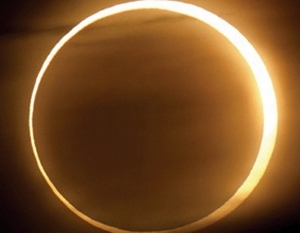The universe is a weird place. I’m not the first person to
notice this. A guy named Zeno also noticed it more than 2,000 years ago. Now,
you wouldn't think there would have been a lot of people 2,000 years ago named
Zeno, but it turns out there were. The Zeno I’m talking about is Zeno of Elea,
a Greek philosopher.
We don’t know much about Zeno. Apparently, he’s mentioned,
along with a buddy of his called Parmenides, in a book Plato wrote called Parmenides. That doesn’t help us much, because no copies of
that book survive to our time. All we know about that book is what other people
say about it when they refer to it in their own writing. People like Aristotle.
Anyway, Zeno and Parmenides had this idea about the
universe, namely, that nothing changes. They didn’t just mean that you hit the
exact same traffic every time you drive to Boston, or that the stories on TV
all seem to be the same: they meant that NOTHING changes.
Ah, you might say, well, I took tuna for lunch today, and
yesterday I took turkey, so that’s a change, which kind of refutes that whole
theory, doesn’t it?
No, they’d say, that’s all an illusion. Really, nothing
changes. And we can prove it, because the whole concept of change leads to
logical contradictions. And if something leads to logical contradictions, it
CAN’T be true.
Zeno is said to have concocted 40 of these demonstrations of
how change leads to logical contradictions, which are called paradoxes. As I’ve
said, we don’t have anything about him except from what others tell us, so we
know of about 9 of these paradoxes, 5 of which are the most famous. These have
to do with how the idea of motion—which is a change in position—leads to
logical contradictions. Let me tell you about 2 of them.
The first one is called the Dichotomy. Suppose you want to
walk up to a wall. To do this, you first have to move half the distance to the
wall. Then you have to move half of the remaining distance. Then you have to
move half of that remaining distance. Then half of that. And half of that. And
so on, infinitely. In other words, before you can get to that wall, you have to
do an infinite number of things first. And, of course, you will never finish
that infinite number of things, so you will never get to the wall.
Ah, you might say, well, I’ve actually walked right up to
walls with no trouble, so that’s not quite true, is it?
Exactly, Zeno would say. Logically, you cannot reach the
wall. But you did actually reach the wall. That’s the logical contradiction I
was talking about. Ergo, motion—and any other change—is actually impossible and
is only an illusion.
These days, we can resolve paradoxes like this one using
mathematics that was unknown in Zeno’s day. For example, we now know how to add
up an infinite series like the one Zeno is presenting us with, namely ½ + ¼ +
1/8 + 1/16 + … You learn how to do this in calculus or pre-calculus. It turns
out that this infinite series adds up to 1, so we don’t have to cover an
infinite distance to get to the wall, just an ordinary finite distance.
Also, it doesn’t take us an infinite time to do it, either.
We know that the time it takes to cover each of these distances is also an
infinite series of the same kind, namely ½ + ¼ + 1/8 + 1/16 + … This also adds
up to 1, so it doesn’t take us an infinite time to perform this infinite series
of tasks, just an ordinary time.
Easy, right?
Well, the other paradox I want to tell you about is a little
trickier. Spoiler alert: it turns out that the math for this one also explains
it pretty easily. But the physics of it: that’s where the fun starts.
This other paradox is called “Achilles and the Tortoise”,
and it has a little story attached to it. The Tortoise, slowest of all
creatures, challenges Achilles, the mighty Greek hero of the Iliad, to a race. Achilles, a very speedy runner, agrees,
and even graciously gives the Tortoise a generous head start. The race begins,
and both racers start off, Achilles very fast and the Tortoise very slow.
Achilles rapidly gets to where the Tortoise started from (call this location L1).
By the time Achilles gets there (L1), however, the Tortoise has, of
course, moved on a ways (to L2). Achilles again gets to where the
Tortoise was (L2), but by the time he does so, the Tortoise has
moved on a slight distance (to L3). Again, Achilles catches up to
where the Tortoise had been (L3), but the Tortoise has again moved
on (to L4). This happens over and over. Indeed, instead of passing
the Tortoise, Achilles can’t even catch up with him. Achilles stops to ponder
this, as Greeks tend to do, and he takes so long pondering that the Tortoise
crosses the finish line and wins the race.

What is going on here? We are surely all familiar with a
faster racer overtaking a slower racer. It happens in every single race. But,
the way Zeno tells it, that seems impossible. Every time fast Achilles gets to
where the slow Tortoise was (Ln), the Tortoise has moved on a short
distance (to Ln+1).
Now, as I said, this also has a fairly simple mathematical
explanation. Let’s think about the times in this situation, rather than the
distances. In the time it takes the Tortoise to
move from location Ln to location Ln+1, Achilles is
moving much further than the Tortoise is. Eventually, the distance that
Achilles covers in this time is going to surpass the distance that the Tortoise
covers, Achilles will pass him by, and win the race, just as we suspected all
along.
Whew! Glad that’s straightened out!
But that was just the math part of it. What about the
physics?
The physics of the situation is more complicated. As long as
we can keep dividing the distance into tinier and tinier pieces to represent
the Tortoise’s motion, there doesn’t seem to be a way for Achilles to catch up.
Whenever he covers the tiny distance to where the Tortoise was (Ln),
the Tortoise isn’t there anymore: he’s traveled the ever-tinier distance to Ln+1.
So, how can this paradox be resolved in physics?
One way is if that previous assumption isn’t really true:
maybe we can’t really keep dividing the distance into tinier and tinier pieces.
Maybe there’s some limit to how much you can divide distance.
Look at it this way. We’ve been thinking of this race as
taking place on something like a wide open soccer field: no divisions, no
limitations, nothing to suggest you CAN’T keep dividing the distance into
tinier and tinier pieces.
But what if the race isn’t on a soccer field? What if it’s
on a checkerboard, an enormous checkerboard, and Achilles and the Tortoise are
checkers or chess pieces on the checkerboard? Achilles is a much faster kind of
piece than the Tortoise is: he can move 10 squares to the Tortoise’s 1. But the
thing about a checkerboard is this: the pieces can’t be just anywhere. They
have to be in one square or another, not somewhere in between. In other words,
on a checkerboard, you CAN’T keep dividing the distance into tinier and tinier
pieces. Eventually, you come down to one single square, which cannot be divided
any smaller.

How does running on a checkerboard affect the race between
Achilles and the Tortoise? In this way: the Tortoise CAN’T keep moving tinier
and tinier distances ahead. The Tortoise can either move 1 square ahead, as the
tiniest move, or no squares at all. Either way, Achilles will eventually land
on the square next to the Tortoise, and then pass the Tortoise in the next
moment.
Think about what this means: this suggests that distance in
the universe CAN’T be divided tinier and tinier. There is some lower limit to
distance in the universe, some tiniest distance—like a square on a
checkerboard—and there’s nothing smaller than that. The universe is granular,
not continuous. You can be in square n or square n+1, but never in between the
two.
Seems strange, doesn’t it?
And it gets worse.
We know, from Einstein’s theory of relativity, that time and
distance are intimately related. In the equations, one can become the other.
But if distance is granular, and there is a smallest distance like a square on
a checkerboard, then time must be that way, too. There must be a smallest time,
a shortest moment, and nothing smaller than that.
In this view of things, time isn’t a continuous flow of
events. It’s more like a movie, which, despite the illusion of continuous flow,
is actually many individual pictures running too fast for us to perceive the
gaps in between. That’s what the universe is like.
Notice that this has nothing to do with quantum mechanics,
which also suggests that space and time come in clumps, not continuously. This
current discussion is deeper than quantum mechanics: you get to where we are so
far using only classical physics, no quantum about it.
Well, so what? What does it matter if the universe is continuous
or discontinuous? What’s the significance of this? The significance is that the
phenomenon that most closely matches what we’ve been describing is: a computer
game. The characters in a computer game don’t live in a world of continuous space
and time either: their world is as granular as a pixel and as discontinuous as
whatever small time-step the programmer has chosen. The illusion of computer
games is very convincing: characters and places and objects and motion look continuous.
But we know they aren’t.
Meaning what? Meaning this: our universe could actually be a
constructed thing. Perhaps not a computer simulation, but something like that. Perhaps
not “The Matrix”, but something like that. A place that was deliberately built.
A place that exhibits this checkerboard kind of behavior.
“Could be.” Remember that, when we began our explanation of
the “Achilles and the Tortoise” paradox, we said that this was one way to resolve the paradox. There are definitely others.
But this is an interesting possibility, isn’t it?
That Zeno was pretty smart.








